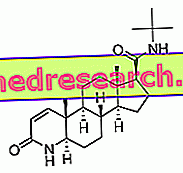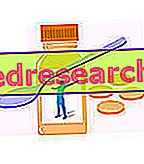See also: anticancer foods
Diet and Cancer
Is there a relationship between diet and cancer?
Yes, there are different relationships between diet and cancer.
On the other hand, these are difficult to interpret and often the simple statistical correlation does not provide a sufficiently comprehensive overview.

In this article we will discuss very delicate but important topics to discover the currently known and proven relationships between what we eat and the oncological pathologies.
Western diet: does it promote the onset of cancer?
For several years, numerous medical researches have followed each other, including confirmations and denials, to try to answer the recurring questions that concern the importance of the diet for the birth or prevention of cancer.
According to current knowledge, in Western countries, around 20-30% of tumors could be "avoided" thanks to a correct diet.
In addition to the nutritional composition of the diet (modified by the preference of some foods rather than others), a very important aspect concerns the association between: lifestyle - understood as incorrect diet and sedentary lifestyle - spread of overweight or obesity - and the onset of certain pathologies oncology.
Share of tumors attributable to various risk factors
| USA, 2012 * | United Kingdom, 2010 ** | |
| Risk factor | % | % |
| Tobacco | 33 | 19 |
| Diet | 5 | 9 |
| Overweight, obesity | 20 | 5 |
| Physical inactivity | 5 | 1 |
| Abuse of alcoholic beverages | 3 | 4 |
| Occupational factors | 5 | 4 |
| Infections | 8 | 3 |
| Ionizing radiation and exposure to UV rays | 2 | 5 |
| Environmental pollution | 2 | - |
Geographical variability
The relationship between nutrition and carcinogenesis was also discovered through the study of the incidence of some types of cancer in relation to the geographical area to which they belong.
It has thus been discovered that certain cancers are more frequent in some countries than others.
Further research has also shown that the risk of developing these diet-related cancers tends to level out in people who have permanently moved from low-risk countries to high-risk ones, adopting the lifestyle and eating habits typical of the latter .
This reduces the importance of the genetic component and supports the role of habits as a risk factor for certain types of cancer.
These differences are often noticeable. According to WHO 1996 data:
- Stomach cancer in Japan was 25 times more frequent than in Uganda
- That of the colon in the United States was 10 times more widespread than in Nigeria
- While liver cancer in Mozambique was 100 times more frequent than in England.
It's still:
- Nigerians living in Africa have fewer cancers of the colon, rectum and liver than those emigrated to the United States
- Among the Japanese who emigrated to Hawaii, where the lifestyle is of the Western type, the frequency of tumors is different than that recorded in the mother country.
- A similar argument can be made for breast cancer: while the incidence of this type of cancer is high in western industrialized countries, in Asia the risk is considerably lower and increases significantly as soon as Eastern women migrate to these countries.
- The lowest incidence for prostate cancer was recorded in Singapore (13%) and Hong Kong (15%), while the highest value belongs to Sweden (31%).
- It has also been seen that a Swedish subject, who is twice as likely to be a carrier of prostate cancer compared to one in Hong Kong, is eight times more likely to die from prostate cancer.
- In Italy significant differences were recorded between the Forlì area - Ravenna and Florence compared to the rest of the Peninsula. In this area the incidence of stomach cancer is four times higher than in the central south. This difference would also be linked to a diet rich in cold cuts and sausages, too often excessively rich in nitrites and nitrates.
In any case, no particular food has been identified as significantly protective or causal.
The only certain relationship seems to be that between the excessive consumption of fat, breast cancer in women and colon cancer in both male and female
Alcohol abuse is instead an important predisposing factor for the development of liver cirrhosis and various types of tumors.
Considerations on statistical values
The contents of the previous paragraph may seem simplistic. Food education, which is currently being disseminated in every media channel, seems to confirm many arguments that we have not mentioned so far.
In reality, many of these correlations (positive or negative) concern the nutrients and the very specific nutritional factors, NOT the food itself.
In addition to this, most studies may be able to demonstrate a chemical reaction or a cellular mechanism, but - due to methodological and developmental issues - it is unlikely that it will be able to sustain certain claims about possible repercussions in the long term.
Related Diet Tumors
What are the main diet related cancers?
The statistics suggest that the most frequently related cancers are:
- Colon
- Breast
- Pancreas
- Liver
- Prostate
- Uterus
- Stomach
| tumors | Risk factors in the diet |
| Esophagus tumor | Abuse of wine, beer and above all spirits; lack of vitamin C, iron, zinc (lack of fresh fruit and vegetables); nitrites and nitrates from preserved meat; frequent consumption of very hot foods |
| Stomach tumor | Nitrates and especially nitrites contained in sausages, dried and smoked foods; see the dedicated article: nitrites and nitrates |
| Colorectal cancer | Excessive consumption of preserved meat, red meat, trans and hydrogenated fats, very salty foods; calcium supplements (not known) and / or dietary fiber deficiency |
| Prostate Cancer | High consumption of red meat, low consumption of vegetable fibers and legumes (soya), high consumption of Dairy Products |
| Breast cancer | High consumption of alcohol and animal fats (mainly saturated), low consumption of vegetable fibers and legumes (soya) |
| Liver cancer | Alcohol abuse and consumption of food contaminated with toxins (eg certain types of fungi or cereals contaminated with aflatoxins) |
| Pancreatic tumor | Excess alcohol, excessive consumption of red meat |
Red Meat and Tumors
Does red meat cause cancer?
In October 2015, the International Agency for Research on Cancer (IARC), part of the WHO (World Health Organization), included WORKED meats among the substances that can cause cancer in men.
This news, which has been given ample media coverage, has caused excessive and unjustified alarmism in the population, thanks to gross and misleading information.
Let us therefore clarify some fundamental aspects present in the scientific publication related to this event.
Which tumors "should" cause red meat?
First of all, the report was epidemiologically ascertained "only" for colorectal cancer, which in Italy represents about 13-14% of all registered cancer cases, ranking third for incidence in men and in second place in women .
A less certain link has instead been identified with stomach cancer, which in Italy represents about 5% of all recorded cases of cancer.
We are therefore talking about a relationship that DOES NOT CONCERGE ALL KINDS OF CANCER, BUT ONLY COLON CANCER and probably stomach cancer.
Which red meats are related to the onset of cancer?
Another very important aspect concerns the quality of the meat, since the study explicitly mentions:
"PROCESSED meats, ie those salted, dried, fermented, smoked, treated with preservatives to improve their flavor or preservation".
So we are not talking about fresh meat, but preserved meat (in other words cured meats, especially smoked meats, canned meats and meat-based sauces).
Therefore, the study does not discover anything new, given that for years the dangerousness of the preservatives used in processed meats (in particular nitrates and even more nitrites) is known.
Are fresh red meat safe?
With all due respect to vegans, the relationship between meat and colon cancer is NOT certain for the classic "Florentine steak" (an Italian variant of the more contained Anglo-Saxon T-Bone Steak) and for other fresh red meats.
Instead it has ONLY been demonstrated for cured meats (cooked and raw hams, mortadella etc.), raw seasoned sausages (salami, dry sausage, pancetta etc.) and cooked (frankfurters, various roasts, mortadella, etc.), smoked meats (speck, etc.), dried (dried meat) and preserved in salt or in oil.
Regarding fresh red meat (beef, mutton, pork, etc.), the study classifies them as "probably carcinogenic" with reference to three specific types of cancer:
- To the colon
- Prostate
- In the stomach.
To get a correct view, the statistics should still be differentiated by type and cut of meat.
Probably, for example, the oncogenic risk is significant for those who consume 200 grams of pork sausages a day, while it is not for those who consume similar quantities of beef fillet.
Needless to point out that, respecting the portions and frequency of consumption suggested for a healthy and correct diet, none of the foods mentioned could be defined as carcinogenic.
Cooking mode: does it affect the chances of cancer?
As for fresh meat, we remind you that the high temperature cooking mode generates toxic and carcinogenic substances.
Lean fresh meat does not appear to be carcinogenic and this is all the more true when cooking is more sober; to be clear, you should avoid burning parts of the food, giving up the classic "black stripes or stripes" left by the grill and the grill pan.
Grids: which are considered safer and which are more harmful?
Always with regard to cooking on the grill, there is also a significant difference as regards the type of fuel and the method of heat transmission.
There are basically 3 types of grids:
- Fed by embers (from wood or coal)
- Gas powered
- Electrically powered.
We have specified that the health-damaging molecules involved in grilling are combustion residues. These can come from:
- from foods
- from the residues on the grid
- from the fuel.
In practice, the firing / carbonization of various molecules such as proteins, fats, carbohydrates and the wood itself (for the embers) is responsible for the release of toxic by-products such as: polycyclic aromatic hydrocarbons, acrolein, acrylamide, formaldehyde, etc.
So, having to rank more or less dangerous grids, we could specify the following:
- The most harmful are, regardless of the type of power supply, dirty grills; many kitchen workers and housewives use not to thoroughly clean this instrument because it tends to attack less food from dirt. It's wrong
- In the second place are the grills fed with the embers; any combustion is harmful but in particular that of raw materials that tend to "smoke" (even if the smoke is given by the water vapor of green wood, because it facilitates the adhesion of unwanted volatile components). The risk of cancer increases dramatically by using wood collected here and there, perhaps with paint residues (shutters or shutters from home, etc.), treated with an impregnating agent (pallets or pallets, broom handles, etc.), exposed to brake residues (brake material of cars and motorbikes) abundant along the roads etc.
- Gas and electric grills are less problematic, although unfortunately most of the residues that run inside the instrument (between the gas dispensers or on the electric coil) are invisible or difficult to clean.
Coffee: can be harmful
Without going into too much detail as regards the suitable and less suitable foods in the diet, which we will expose with greater precision in the article Diet to Prevent Cancer, it is necessary to make a clarification on coffee.
This drink, widely consumed in Italy and in the rest of western countries, is produced by infusion of a powder obtained from the grinding of roasted seeds.
Green coffee is green; after roasting it becomes dark brown. Only this detail (Maillard's strong reaction) should make us understand that food is a potential carrier of unwanted molecules.
The coffee powder contains a small amount of acrylamide, a carbonization residue that is greatly feared for its toxic and carcinogenic effects; the food that contains the most are the French fries.
On the other hand, if it is true that two cups of coffee a day cannot harm health, the subject changes with regard to excessive quantities; coffee abuse is widespread.
It is therefore useless to follow a healthy diet if many coffees are consumed per day.
Relationship between tumors and other risk factors
It is logical to expect that the consumption of preserved meat is more common among the population groups that are generally less attentive to food and health.
Conversely, the attention towards one's health is generally greater among vegetarians and vegans; in this group, it is therefore logical to expect fewer percentages of smokers, alcoholics and overweight people, greater attention to physical activity and a greater supply of antioxidants, dietary fiber and other protective colon cancer colonies, to the stomach and prostate.
A serious and reliable comparison should therefore be carried out between two populations with the same risk factors, with the exception of what one intends to evaluate.
Considering only the nutritional aspect or further reducing the comparison to a single group of foods leads to big blunders.
This has led many experts to oversize the presumed benefits of a vegetarian or vegan diet as an element of cancer prevention.
Lifestyle and Cancer
How important is lifestyle in cancer onset?
Poor nutrition is only one of many factors involved in the development of a tumor.
The diet is in fact part of the large family of modifiable risk factors, as they are related to the lifestyle of the person.
It is therefore not a question of eating properly only, but also of performing regular physical activity, avoiding as much as possible alcohol, drugs, excessive sun exposure and drug abuse.

Obesity, in which it is possible to recognize a component of a food nature (diet) and a behavioral component (a sedentary lifestyle), is an important risk factor for many types of cancer, such as breast, colorectal, prostate, cervix, ovary and esophagus.
Dangerous pollutants hidden in wild products
Finally, let's not forget the origin of the foods.
Foods of dubious origin can be a vehicle for carcinogens; this is the case with pollutants and pesticides. They seem more exposed to these contaminants:
- Products "not officially recognized", even Italian
- Foreign products, purchased outside the European community (even if they are subject to numerous checks to be marketed in Italy).
Furthermore, many people, frightened by the critical nature of farming and agriculture, try to collect mushrooms (pioppini, field mushrooms, pleurotus, etc.), vegetables (wild radicchio, dandelion, hops, etc.), fruits (blackberries, maraschino, etc.) and molluscs wild (especially mussels).
Keep in mind that these resources are NOT at all exempt from contamination, especially with regard to environmental pollutants, herbicides, heavy metals and algal or fungal toxins.
Sometimes you run greater risks by seizing a product in the wild than buying it from guaranteed sources.
Is there an effective diet to prevent cancer? »
See also: Diet and aging: eat well to live long



